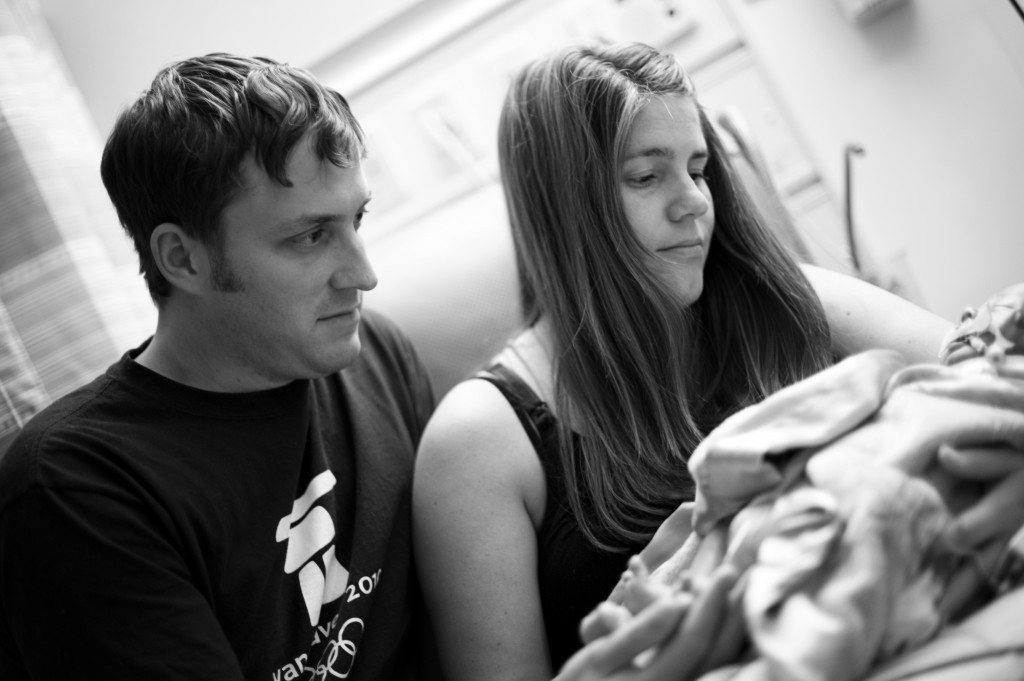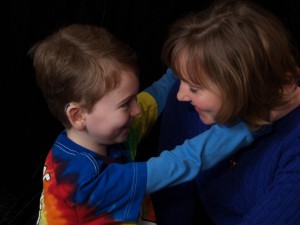
Liam Burns died 12 days after birth from an unexplained set of heart defects. His parents hope the CLARITY challenge will provide a meaningful explanation.
One extended family has a range of unexplained heart defects—sometimes a hole in the heart, sometimes an arrhythmia. One child, Liam Burns, died days after birth from an underdeveloped heart, a narrowed artery to the lungs and an electrical block. Yet other family members have little more than a heart murmur. All of the defects are on the right side of the heart.
Another family’s son, 11-year-old Adam Foye, has unexplained muscle weakness and fatigue. He can walk only short distances and needs a ventilator at night to support his breathing.
These families—and a third that chose to remain anonymous—decided to submit their DNA to a challenge sponsored by Boston Children’s Hospital called CLARITY. Not only have their complete genomes been sequenced, but 30 teams all over the world—from biotech startups to the National Institutes of Health—were given access to the sequences and set loose to come up with “best practices” for interpreting the results. Two dozen turned in submissions, now being evaluated by a panel of judges.
Children, siblings and parents in each family had already been tested for every gene known to cause a disease that looks like theirs. In the case of Liam’s family, it was a short list. “There are only four known genes for right-sided heart defects,” says Stephanie Burns, Liam’s mother. “They were all negative.”
That left the family on tenterhooks when Stephanie found herself pregnant with her second child. “It was terrifying, like flipping a coin,” she recalls. “If you know the gene, you can know earlier if there’s a defect, or you can conceive differently—there are just more options.” Fortunately, they lucked out this time—their daughter’s heart is healthy.
Adam has tested negative for 13 known genes; as each new one was discovered (some of them at Boston Children’s), Adam was tested for it. “Once you have a diagnosis, you can have a feel for what medical risks are associated with the disease,” says his mother Sarah Foye. “You’re not just treating as symptoms arise. You can begin to understand the mechanism of the disease and look at viable treatment possibilities.”
Skipping the gene-by-gene approach, the CLARITY contestants were given complete DNA sequence data from each family, generated from their blood samples by contest sponsors Life Technologies Corporation and Complete Genomics.
“The beauty of whole-genome sequencing is that it provides results for virtually all of our roughly 20,000 genes at once,” says Alan Beggs, PhD, director of the Manton Center for Orphan Disease Research at Boston Children’s, a co-sponsor of CLARITY. “It’s a completely unbiased approach.”
Thanks to technological advances, genome sequencing is now approaching a fairly reasonable $1,000 per person. It seems like it’s being offered everywhere—and often direct-to-consumer. But here’s why Boston Children’s started CLARITY: When it comes to interpreting the DNA data in a way that’s meaningful for a patient, there’s a distinct lack of clarity.
Should every unusual or “abnormal” finding be reported? What’s a real finding, and what’s background noise? What if there’s an incidental finding (say, a risk for cancer) that has nothing to do with the disease in question? How can the information be shared responsibly? What about privacy?
“The last major barrier to widespread clinical use of DNA sequencing is the creation of accurate, understandable interpretations of sequence findings for doctors and patients,” says co-organizer David Margulies, MD, executive director of The Gene Partnership at Boston Children’s. “The goal of this contest is to define norms, standards and models.”
The winning team will receive $25,000. The challenge results will be shared at the American Society for Human Genetics meeting in San Francisco in November—and will be used to guide the use of genomic sequencing done for patients at Boston Children’s—and, indeed, around the world. Establishing “best practices” through CLARITY is first step in taming the Wild West—sequencing DNA thoughtfully and responsibly.
Read coverage of the CLARITY contest in Nature Medicine, Bio-IT World and the Wall Street Journal.







